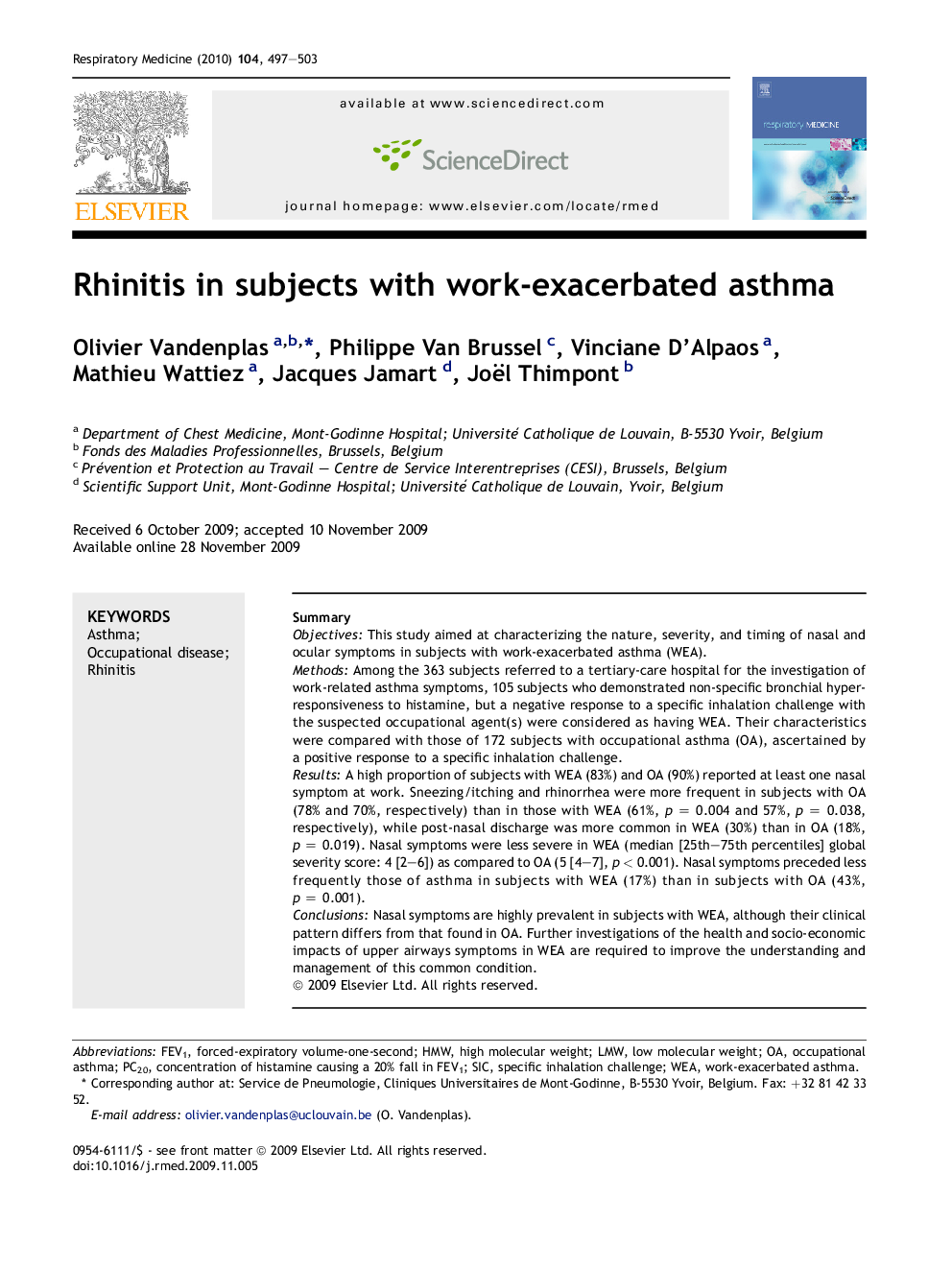| Article ID | Journal | Published Year | Pages | File Type |
|---|---|---|---|---|
| 4210650 | Respiratory Medicine | 2010 | 7 Pages |
SummaryObjectivesThis study aimed at characterizing the nature, severity, and timing of nasal and ocular symptoms in subjects with work-exacerbated asthma (WEA).MethodsAmong the 363 subjects referred to a tertiary-care hospital for the investigation of work-related asthma symptoms, 105 subjects who demonstrated non-specific bronchial hyperresponsiveness to histamine, but a negative response to a specific inhalation challenge with the suspected occupational agent(s) were considered as having WEA. Their characteristics were compared with those of 172 subjects with occupational asthma (OA), ascertained by a positive response to a specific inhalation challenge.ResultsA high proportion of subjects with WEA (83%) and OA (90%) reported at least one nasal symptom at work. Sneezing/itching and rhinorrhea were more frequent in subjects with OA (78% and 70%, respectively) than in those with WEA (61%, p = 0.004 and 57%, p = 0.038, respectively), while post-nasal discharge was more common in WEA (30%) than in OA (18%, p = 0.019). Nasal symptoms were less severe in WEA (median [25th–75th percentiles] global severity score: 4 [2–6]) as compared to OA (5 [4–7], p < 0.001). Nasal symptoms preceded less frequently those of asthma in subjects with WEA (17%) than in subjects with OA (43%, p = 0.001).ConclusionsNasal symptoms are highly prevalent in subjects with WEA, although their clinical pattern differs from that found in OA. Further investigations of the health and socio-economic impacts of upper airways symptoms in WEA are required to improve the understanding and management of this common condition.
